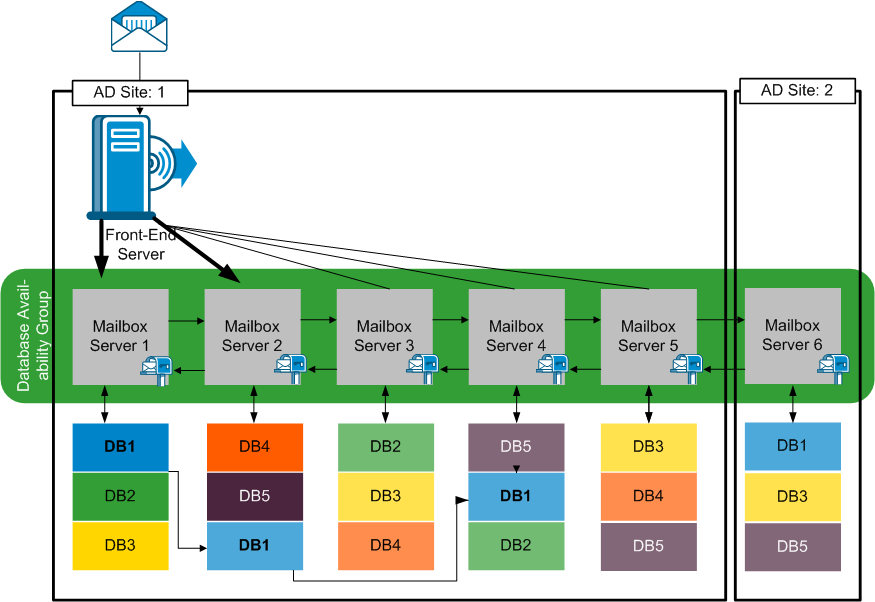

A Microsoft Exchange Server messaging system comprises several administrative units, the largest of which is the organization. The organization hierarchy varies depending on the version of Exchange Server you are using:
Note: If you are using Exchange Server 2003 and want information on performing Volume Shadow Copy Service backups, see the Microsoft Volume Shadow Copy Service Guide.
Note: For more information about Exchange Server 2007 organization models, see the Microsoft TechNet web site.
Each Exchange mailbox server in the organization can have up to 50 storage groups. In a non-replicated environment, each storage group can have up to five database stores. In a replicated environment, each storage group can have one database. Each database can be mounted and dismounted independently.
The concept of a Database Availability Group provides failover at database level, rather than server level, and is transparent to end users. In a DAG, only one copy of a database is active at any one time. Arcserve Backup lets you choose to back up from active databases or replicas. DAGs can include mailbox servers in separate physical locations, as well.
In this example, five members comprise the DAG with a sixth one off-site. Databases are spread across the DAG so that no two members have the same database configuration. This configuration is Microsoft's suggestion for providing database availability in the event of hardware failure. Users access the Exchange Server and are routed to the active database. Suppose DB1 hosted on Mailbox Server 1 is active. If Mailbox Server 1 fails, users can be routed to the copy of DB1 on Mailbox Server 2. If Mailbox Server 2 fails, users are routed to the copy of DB1 on Mailbox Server 4. For more information on how DAGs work, see the Microsoft website.

|
Copyright © 2015 |
|